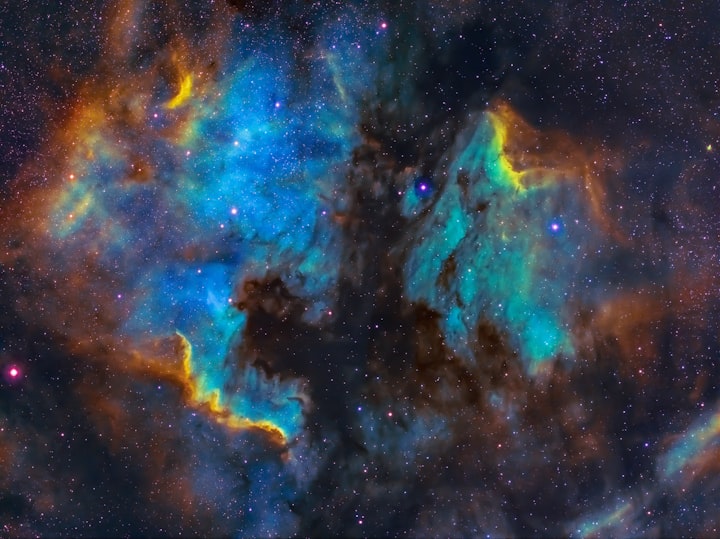
Unveiling the Incomprehensible Scale of the Cosmos
As we stand on the precipice of the cosmos, Earth reveals itself as a diminutive speck amidst the grandeur of the universe. The Moon, once considered an intimate companion, is unveiled as a distant neighbor with a vast expanse of 384,400 kilometers between us. This celestial chasm, wide enough to accommodate 30 Earths, serves as a poignant reminder of the staggering immensity of space that envelops our cosmic home.
Mars, the enigmatic Red Planet, beckons us with its mysterious allure. A photograph captured from its surface depicts Earth as a distant point of light—a fragile beacon suspended in the cosmic sea. The journey to Mars, spanning an average of 225 million kilometers, poses a stark contrast to our previous lunar endeavors. The isolation of our neighboring worlds becomes palpable as interplanetary communication, subject to a 20-minute delay, underscores the profound distances that separate us.
Voyager 1, humanity's intrepid explorer, drifts at 138 astronomical units from Earth—a vantage point that offers a perspective beyond the confines of our solar system. A poignant photograph taken by Voyager 1 reveals Earth as a pale blue dot—a humbling sight envisioned by the astrophysicist Carl Sagan. This iconic image encapsulates the fragility of our cosmic home, a tiny oasis adrift in the vastness of space, suspended in a sunbeam against the cosmic backdrop.
Venturing further into interstellar realms, Proxima Centauri emerges as the closest star beyond our solar system, distant at 4.24 light-years. The steady pace of Voyager 1 at 17 kilometers per second, while a commendable feat of human ingenuity, underscores the colossal distances involved. A journey to reach this neighboring star would span over 70,000 years, highlighting the vastness of the cosmic frontier.
The Milky Way, our celestial abode, unfurls before us in all its galactic splendor. A galaxy teeming with stars, it encapsulates our radio broadcasts, echoing humanity's presence throughout the cosmos. Yet, the revelation that 99% of visible stars inhabit a confined space emphasizes the relative insignificance of our galactic neighborhood within the greater cosmic expanse.
The Local Group, a congregation of 54 galaxies, expands our cosmic neighborhood to a staggering 10 million light-years. Beyond this lies the Virgo Supercluster, a colossal structure that houses countless galaxy groups in its cosmic embrace. Within this supercluster, the Laniakea Supercluster takes form, enveloping our galaxy and 100,000 others in its vast cosmic arms. The distance spans an astonishing 520 million light-years, revealing the cosmic grandeur that extends beyond the limits of our immediate cosmic vicinity.
Yet, this supercluster is but a fraction of the observable universe—a vast canvas hosting at least 2 trillion galaxies within its expansive 93 billion light-year domain. The cosmos, an ever-expanding tapestry, beckons exploration and discovery. However, the Theory of Cosmic Inflation postulates a scale beyond human comprehension—a universe 150 sextillion times larger than our observable reality. This astronomical figure underscores our minuscule place in the cosmos, emphasizing our existence as a mere whisper in the cosmic winds.
In this cosmic ballet, our presence is akin to a speck on a speck on a speck—infinitesimally small against the backdrop of the universe. The uncharted realms that stretch beyond our perceptual reach beckon, filled with mysteries waiting to be unraveled. Our smallness in the cosmic tapestry does not diminish our significance; rather, it magnifies the infinite possibilities that await our exploration. The cosmic journey, though challenging, promises boundless wonders and revelations, extending far beyond the limits of our current understanding of the cosmos. As we traverse the cosmic seas, let curiosity be our compass, guiding us toward the endless possibilities that await in the vast cosmic ocean.
About the Creator
Nico Cox
Student in Sports and Exercise Sciences, but filled with interest and curiosity about the world, astronomy, natural catastrophes, and political sciences. Writing for fun and out of personal interest. Enjoy the read!
Reader insights
Outstanding
Excellent work. Looking forward to reading more!
Top insights
Compelling and original writing
Creative use of language & vocab
Excellent storytelling
Original narrative & well developed characters
On-point and relevant
Writing reflected the title & theme






Comments
There are no comments for this story
Be the first to respond and start the conversation.